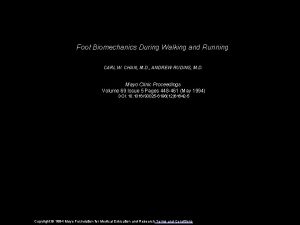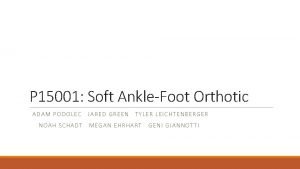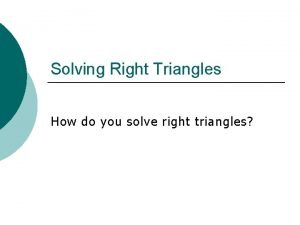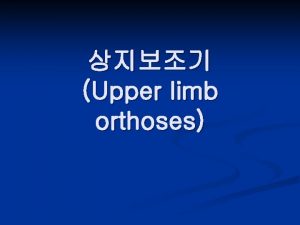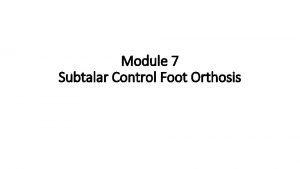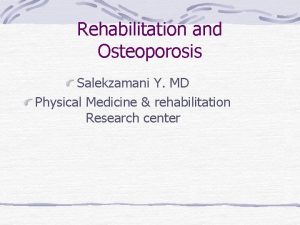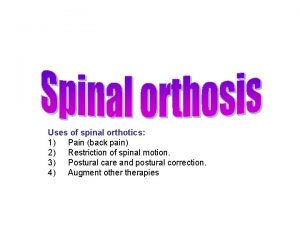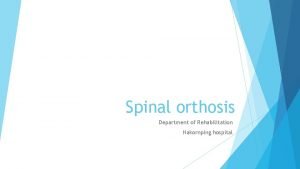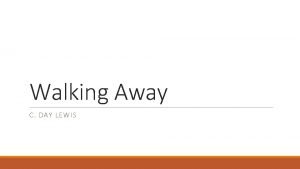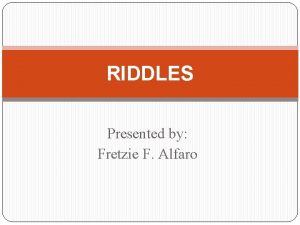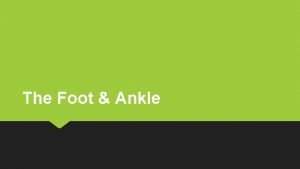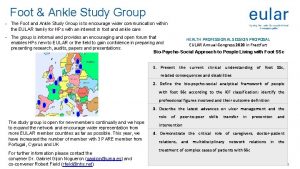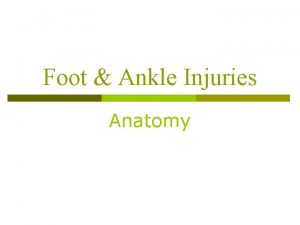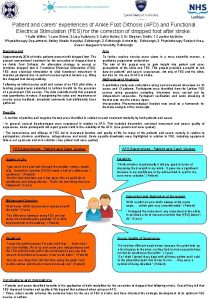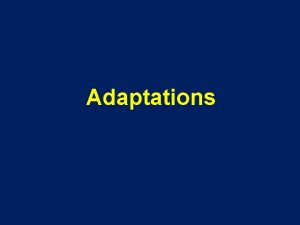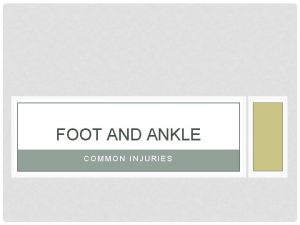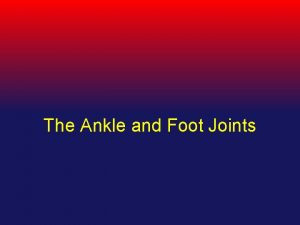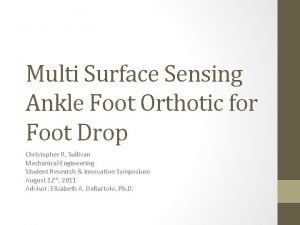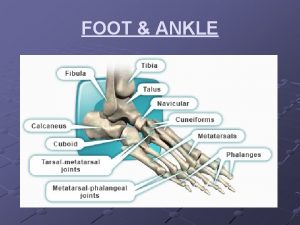Walking Adaptations to an Ankle Foot Orthosis in















- Slides: 15

Walking Adaptations to an Ankle Foot Orthosis in Individuals with Peripheral Artery Disease By Todd Leutzinger

Background • Affects 8 million people in the US • 200 million worldwide • Atherosclerotic disease • Decreased blood flow to the lower extremities • Activity induced pain • Negative Health Outcomes • Decreased functional ability • Diminished quality of life • Increased risk for cardiovascular related events Roger et al. , 2012 Hiatt et al. , 2008 Garg et al. , 2006 Fowkes et al. , 2013 Newman et al. , 1993 Mc. Dermott et al. , 2001 Regensteiner et al. , 2008

Background • Lower physical activity, contributes to progression of disease • Physical activity decreases risk of cardiovascular related event Crowther et al. , 2007 Garg et al. , 2006

Background • Current Treatments: • Pharmacotherapy • Surgery • Exercise Norgren et al, 2007 Olin & Sealove, 2010

Background • Ankle foot orthoses (AFO) improve walking performance in other chronic disease populations • AFOs could potentially improve walking performance in individuals with PAD Wiggin, Sawicki, & Collins, 2011 Bregman et al. , 2012 Danielsson & Sunnerhagen, 2004

Purpose • To investigate how individuals with PAD adapt to a passive AFO in a single walking session and after a three-month adaptation period • Methods designed to measure changes in movement patterns over time will be used to quantify adaptations. • Joint Angle Coefficient of Determination

Specific Aims Specific Aim #1: To determine how individuals with PAD adapt kinematic and spatiotemporal gait parameters within a single walking session while wearing an AFO • Hypothesis 1: The coefficient of determination will trend toward the non. AFO (NAF) walking trial values as time progresses in a single walking session. Specific Aim #2: To determine how kinematic and spatiotemporal adaptations to gait occur after a three-month adaptation period while wearing an AFO in individuals with PAD. • Hypothesis 2: The coefficient of determination values will not be significantly different from the baseline walking trial without the AFO.

Significance Why is this research important? • Determine the amount of time before posttest measurements should be taken • Determine how long before patients see improvements in walking distance • Determine if supervised therapy should be designed to help with adaptation process

Methods Study Protocol • Retroreflective markers were placed on the subject using a modified Helen Hayes model • Subjects performed two treadmill walking trials: AFO trial and NAF trial • Subjects walked at 2 mph for 15 minutes or until claudication pain forced them to stop • The treadmill inclined 2% every two minutes to induce claudication pain • Subjects were instructed to indicate the onset of initial claudication pain

Methods Baseline Visit Three Month Adaptation Period Three Month Visit

Analysis Joint Angle Coefficient of Determination Hip Angle Knee Angle Active Ankle Angle (deg) Joint Angles Ankle Angle Cain, Gordon, & Ferris, 2007

Short Term Results * • Significant differences between AFO and NAF walking. * 1 * * * • No significant main effects across levels of claudication pain for AFO walking. Coefficient of Determination 0. 8 Pain Free 0. 6 Initial Claudication Absolute Claudication 0. 4 NAF Walking 0. 2 0 Ankle Knee Hip

Long Term Results • One significant main effect across levels of claudication pain for AFO walking. 1. 1 Coefficient of Determination • Significant differences between AFO and NAF conditions during pain free walking. 1. 3 * * 0. 9 0. 7 Pain Free Initial Claudication Absolute Claudication 0. 5 NAF 0. 3 0. 1 -0. 1 Ankle Knee Hip

Discussion and Conclusions • Joint angle patterns were initially different between AFO and NAF walking. • Subjects were unable to adapt in a single walking session • After three months of adaptation subjects adapted joint angle patterns very quickly • Lack of subjects completing the long-term protocol may play a role in the lack of significance for coefficient of determination values • Future studies should investigate how individuals with PAD adapt to an AFO over multiple walking trials.

Funding and Collaborations Funding Source • GRACA Collaboration • Omaha Veterans Affairs Medical Center
 Foot orthosis project
Foot orthosis project Foot biomechanics during walking and running
Foot biomechanics during walking and running Ankle foot orthoses
Ankle foot orthoses Physiology of the foot and ankle
Physiology of the foot and ankle Put your left foot in
Put your left foot in Solving right angles
Solving right angles Opponens orthosis
Opponens orthosis Milwakukee
Milwakukee Orthosis
Orthosis Lumbar sacral orthosis
Lumbar sacral orthosis Weighted kypho-orthosis
Weighted kypho-orthosis Orthosis
Orthosis Taylor tlso
Taylor tlso Walking the talk
Walking the talk Walking away poem analysis
Walking away poem analysis Baboy sa lasang ang tunok puro lansang answer
Baboy sa lasang ang tunok puro lansang answer

